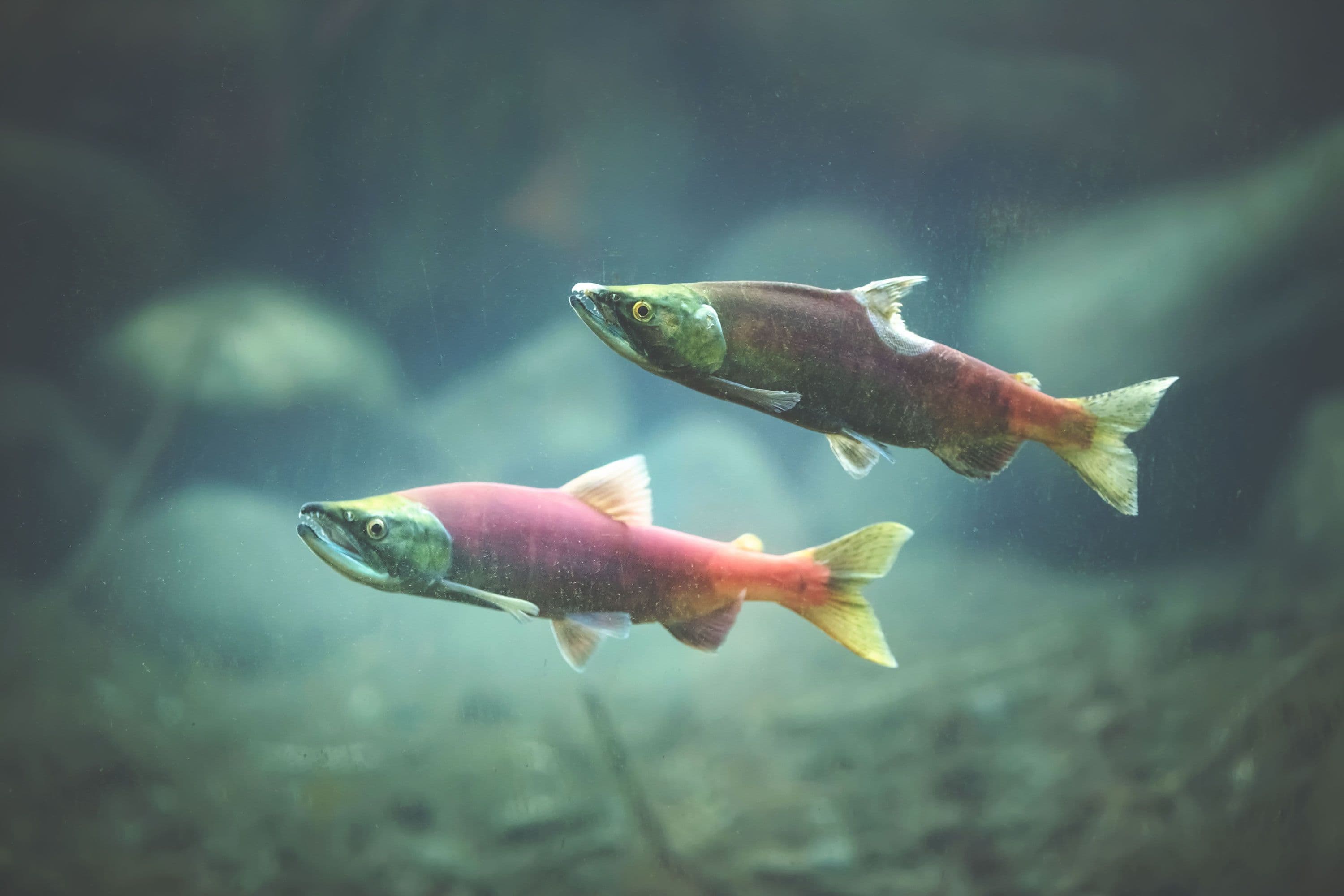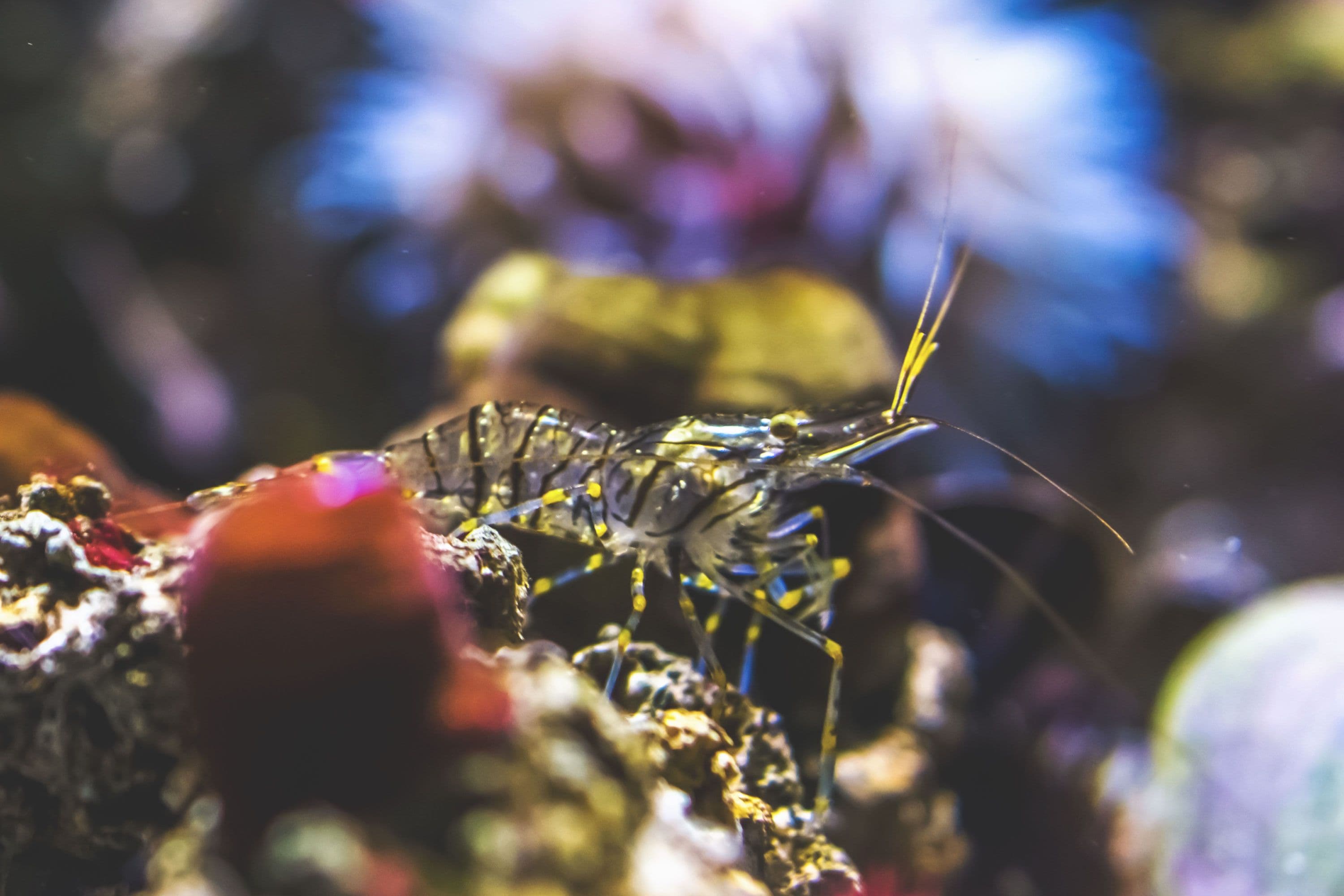
Sea lice control
Sea lice are naturally occurring in the ocean, and have been feeding on wild salmon for millennia. Salmon farms, with high fish density, provide good conditions for sea lice to multiply. Therefore, it is essential that salmon farmers work continuously to control sea lice.
High levels of sea lice, especially when the vulnerable wild salmon smolt are passing farms on their way from the rivers where they were born to the ocean, may affect the health and possibly the survivability of wild salmon. They can also impact welfare of our farmed salmon. It is our responsibility to avoid impacting wild salmon with sea lice.
Controlling sea lice is the single biggest challenge that the salmon farming industry faces. Grieg Seafood’s main approach is to control sea lice preventatively, and by using as few treatments as possible. Preventative sea lice control gives better fish welfare and also a lower environmental impact. Fundamental to our preventative sea lice control strategy are:
Breeding
When available, we use roe from salmon that has proven resistant to sea lice. When further developed, this is likely to be an important part of future sea lice control.
Creating barriers
If suitable conditions, we use sea “lice skirts”, to prevent the sea lice from entering our pens. Most sea lice live down to seven meters below the ocean surface. Sea lice skirts are specialized tarps that we put around the pens 10 – 15 meters down from the ocean surface. We see good effect of this measure on some farms, but have to ensure that oxygen levels behind the skirt are not impacted.
Area Based Management
With Area Based Management, all farms in one area fallow at the same time. In some regions, this is an important measure to remove all sea lice and also diseases connected to salmon farms within a fjord system, and has helped us reduce the number of sea lice treatments over the last years.
Treatments
If preventative measures are not enough, we use mechanical treatments, such as fresh water, to avoid affecting the environment. The methods are selected when conditions are favourable. Only as a last resort do we use medical sea lice treatments, and always in compliance with the strict regulations.
Local conditions
Each region have different temperatures and ocean conditions. While we transfer best practice between the regions, we also emphasize different measures due to unique local conditions. Read more about each regions’ sea lice strategies here: Rogaland, Finnmark and British Columbia.
Escape control
In areas where the wild salmon is of the Atlantic species, escapes may cause interbreeding between farmed and wild salmon in the rivers, and interfere with the genetic uniqueness of the local wild salmon population. This is a risk in Finnmark, Rogaland and Newfoundland.
Grieg Seafood have zero tolerance for escapes from our farms in all of our regions. We set this target every year, including 2023. We work to prevent escapes the following ways:
- High technical standards at our sites. We have implemented the technical minimum requirement given by the government, the NYTEK standard, at all facilities in Norway to avoid escapes during harsh weather.
- We follow procedures to avoid escapes before, during and after operations, according to local conditions:
- Divers and/or a ROV are used before and after the transfer or treatment of fish.
- In Rogaland, divers are used during operations.
- In Finnmark, a ROV is used during operations.
- In British Columbia, we use double nets on all pens. An ROV is used to inspect the grow nets after each targeted two week cleaning cycle.
- Regular inspections of vessels, moorings, and facilities to verify compliance.
- Inspections before and after harsh weather.
- Our goal is that all employees attend courses on escape prevention at least every third to fifth year. New employees also receive risk and procedural training, and do not carry out work operation.
- In Newfoundland, our licenses require that we use sterile salmon. They do not mature, cannot reproduce or mix with wild salmon.
Disease control
While little research exists on the potential transmission of diseases from salmon farms to wild salmon, the possibility of such impacts does exist. Grieg Seafood is working hard to avoid diseases on our farms. Read more about that here.
Other measures to co-exist with wild salmon
Monitoring of farmed salmon in wild salmon rivers
Salmon farming in the Alta river and the Repparfjord river in Finnmark is monitored in collaboration with the Norwegian Institute for Nature Research, the management of the Alta rivers, and the West Finnmark Hunting and Fishing Association. Anglers are encouraged to send salmon scale samples to the Norwegian Institute for Nature Research, which analyses whether the samples are from a farmed or wild salmon. Grieg Seafood is the project manager on this program, as part of our commitment to co-existence between wild salmon and the salmon farming industry.
As wild salmon is an important part of Indigenous culture, we have an even greater responsibility to avoid causing harm.


